|
Larissa May 2017
Karo-Aviation
visit Larissa airbase for The end of the Film
Article and pictures by Ronald de Roij
The 348 MTA
(Tactical Reconnaissance Squadron), one of the oldest and most historic
Hellenic Air Force squadrons, was disbanded on May 5, after sixty-four years of operations, when the engines of
its last RF-4E Phantom II where silenced.
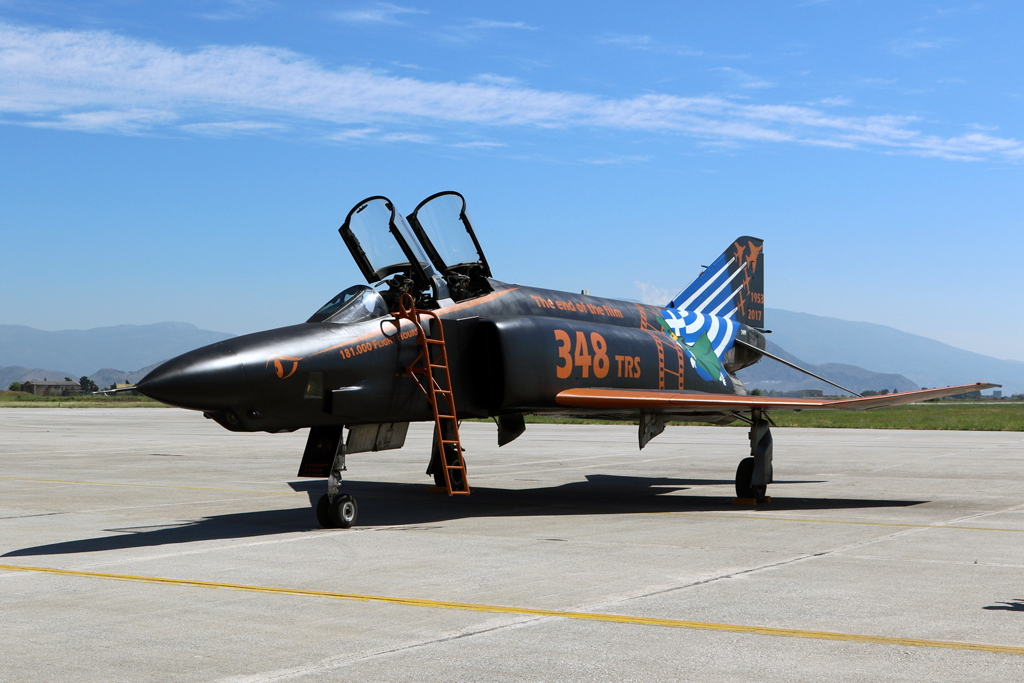
This former German RF-4E Phantom
II was specially decorated for the
occasion
Depicting not only the squadrons motto Eyes but also the
numbers of hours made
on the different types and in total by the squadron.
|
348
MTA
 348 MTA (Tactical Reconnaissance Squadron) Matia (Eyes) was formed in
1953 first as a flight, part of 110 Combat Wing. This was following a
flight test conducted by the 335 Sqn with a modified F-84G Thunderjet carrying a
camera in the wingtip tank. After a while the Greek Air Force decided to
adopt specific aircraft for aerial reconnaissance, acquiring the RT-33A Shooting Star. 348 MTA (Tactical Reconnaissance Squadron) Matia (Eyes) was formed in
1953 first as a flight, part of 110 Combat Wing. This was following a
flight test conducted by the 335 Sqn with a modified F-84G Thunderjet carrying a
camera in the wingtip tank. After a while the Greek Air Force decided to
adopt specific aircraft for aerial reconnaissance, acquiring the RT-33A Shooting Star.
This Reconnaissance specialty was then assigned to the 348th MTA on July
7th, 1954 in Larissa. The squadron resaved the “all-seeing head” as its
emblem. Already in 1956 the RT-33A Shooting Star were replaced by new RF-84F Thunderflash offering a
larger capability then the RT-33A Shooting Star. In the period from 1956 to 1978 the
RF-84F Thunderflash was the only type of aircraft assigned to the squadron, in 1978
the first RF-4E Phantom II joined the squadron leaving the RF-84F Thunderflash in
more of a training role.
On March 29th 1991, the RF-84F Thunderflash aircraft were withdrawn
after thirty-four years of
active service. In the two years following three Phantoms were lost
leaving in the Squadron’s inventory with very few
last RF-4E Phantom II's, just enough to
form a flight. This made it necessary to replace not only the retired
RF-84 Thunderflash, but the lost last RF-4E Phantom II's also.
In 1993 Hellenic Air Force received twenty-seven RF-4E Phantom II's from the
Luftwaffe with the first jets arriving at Tanagra air base in May 1993.
Twenty of these RF-4E Phantom II joined the 348 TRS fleet while the remaining seven
would serve as a source for spare parts. Most of these aircraft would
remain in service with the 348th MTA until the end.
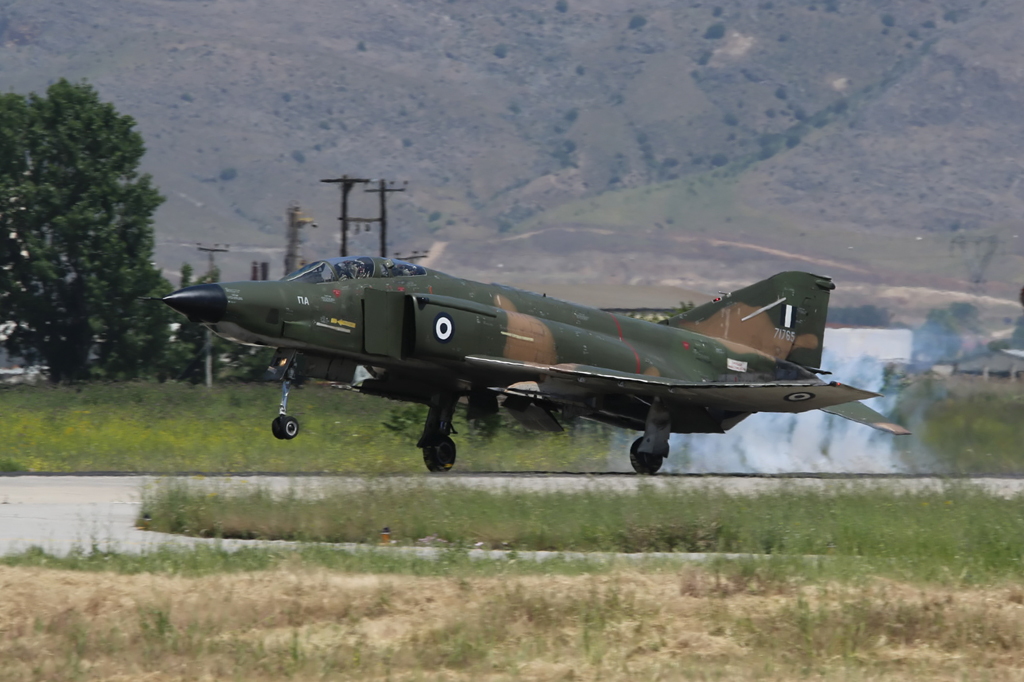
|
Greece received its first eight RF-4E Phantom II's in 1978 straight
from the factory.
Off these the 71765 was seen still wearing the original Southeast Asia camouflage
colour scheme.
|
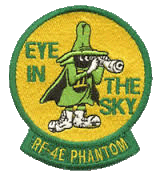 RF-4E RF-4E
The RF-4E Phantom II was the reconnaissance version of the F-4E Phantom
II It was designed strictly for export, and never served with the USAF.
It combined the reconnaissance systems of the RF-4C Phantom II with the J79-GE-17 engines and much of the airframe of the F-4E
Phantom II.
The West German Luftwaffe was the RF-4E Phantom II's largest customer. The first of
eighty-eight
RF-4E Phantom II's were ordered by the West German Luftwaffe in January of 1969.
Subsequently, Israel, Iran, Japan, Greece, and Turkey were supplied with
RF-4E Phantom II's. The German RF-4E Phantom II's had the angular nose associated with the US Navy's RF-4B
Phantom II and the early RF-4C Phantom II of the USAF. However, the RF-4E
Phantom II aircraft supplied to the Israeli, Iranian, Japans , Greek, and Turkish air forces were delivered with the more streamlined nose characteristic of later USAF RF-4C
Phantom II's.
In contrary to the RF-4C Phantom II some of the RF-4E Phantom II where able to carry air-to-air missile as a well to having a secondary ground attack capability.
With the phase out of the last Greek RF-4E Phantom II, Iran and Japan remain the
last operators of the reconnaissance variant of the F-4 Phantom II
|
RF-4E of the Hellenic Air Force.
Greece received its first eight RF-4E
Phantom II's with the Peace Icarus II contract (Serial's 70357, 70358 and 71761 to 71766).
The eight new RF-4E Phantom II's were ordered in 1978 and by
September of the following year all were operational with
the 348 MTA at Larissa.
These aircraft have slated wings and the newer rounded
camera nose compared to the RF-4C Phantom
II, all received the antennas
of the DIAS protection system (made by Raytheon) and a AIM-9
fire capability.
Starting in 1993 a further twenty-seven former German Air Force RF-4E
Phantom II's were delivered to 348 MTA, twenty of these were put into service
while the remainder were held as a source of spare parts.
On
July 28, 1994 these additional aircraft became operational.
The ex Luftwaffe RF-4E Phantom II's are from the first RF-4E
Phantom II production
blocks and have no leading edge slats under the wings, a
straight camera nose and no self defence capability like the
original eight.
The eight RF-4E Phantom II new builds were supplied in USAF's standard
south-east Asia two tone green and brown camouflage scheme.
The twenty former German RF-4E Phantom II retain the black and green
camouflage scheme as worn when in Luftwaffe service
|
|
Serial |
Type |
C/N |
EX |
|
70357 |
RF-4E-66-MC |
5029 |
FMS 77-0357 |
|
70358 |
RF-4E-66-MC |
5036 |
FMS 77-0358 |
|
71761 |
RF-4E-67-MC |
5041 |
FMS 77-1761 |
|
71762 |
RF-4E-67-MC |
5045 |
FMS 77-1762 |
|
71763 |
RF-4E-67-MC |
5046 |
FMS 77-1763 |
|
71764 |
RF-4E-67-MC |
5048 |
FMS 77-1764 |
|
71765 |
RF-4E-67-MC |
5049 |
FMS 77-1765 |
|
71766 |
RF-4E-67-MC |
5050 |
FMS 77-1766 |
|
7449 |
RF-4E-43-MC |
3872 |
ex 35+02 |
|
7450 |
RF-4E-43-MC |
3883 |
ex 35+03 |
|
7454 |
RF-4E-43-MC |
3927 |
ex 35+07 |
|
7460 |
RF-4E-44-MC |
4007 |
ex 35+13 |
|
7464 |
RF-4E-45-MC |
4040 |
ex 35+17 |
|
7471 |
RF-4E-45-MC |
4060 |
ex 35+24 |
|
7476 |
RF-4E-45-MC |
4074 |
ex 35+29 |
|
7482 |
RF-4E-45-MC |
4092 |
ex 35+35 |
|
7486 |
RF-4E-46-MC |
4099 |
ex 35+39 |
|
7487 |
RF-4E-46-MC |
4101 |
ex 35+40 |
|
7491 |
RF-4E-46-MC |
4109 |
ex 35+44 |
|
7493 |
RF-4E-46-MC |
4114 |
ex 35+46 |
|
7495 |
RF-4E-46-MC |
4117 |
ex 35+48 |
|
7496 |
RF-4E-46-MC |
4118 |
ex 35+49 |
|
7498 |
RF-4E-46-MC |
4122 |
ex 35+51 |
|
7499 |
RF-4E-46-MC |
4124 |
ex 35+52 |
|
7500 |
RF-4E-46-MC |
4127 |
ex 35+53 |
|
7506 |
RF-4E-46-MC |
4138 |
ex 35+59 |
|
7507 |
RF-4E-46-MC |
4140 |
ex 35+60 |
|
7508 |
RF-4E-46-MC |
4142 |
ex 35+61 |
|
7511 |
RF-4E-47-MC |
4148 |
ex 35+64 |
|
7519 |
RF-4E-47-MC |
4164 |
ex 35+72 |
|
End of the film
On Friday, May 5th the ceremony for the suspension of the 348 MTA (Tactical
Reconnaissance Squadron) and the withdrawal of the RF-4E Phantom II
took place at the 110th Combat Wing at the Larisa Air Base.
The Chief of the Hellenic Armed Forces, Admiral Evangelos Apostolakis (HN),
and the Chief of the Hellenic Air Force General Staff, Lt. General
Chrostos Christodoulou, opened the ceremony with their welcoming
speeches.
The ceremony was attended by current and retired
staff of the Hellenic Air Force which served at the 348th MTA, as well
as a large amount of public guests. During the ceremony a Roll Call of the Fallen
was held followed by a minute of silence.
The
RF-4E
Phantom II was honoured via a small air display consisting
off a pass including the aircraft that are going to "replace it the F-16
Fighting Falcon and the Mirage 2000. Followed by a last pass off the
three last operational RF-4E
Phantom II of the Hellenic Air Force.
At the end of the ceremony one
RF-4E
Phantom II taxied to the static marking the end of the
operational period off 348 MTA.
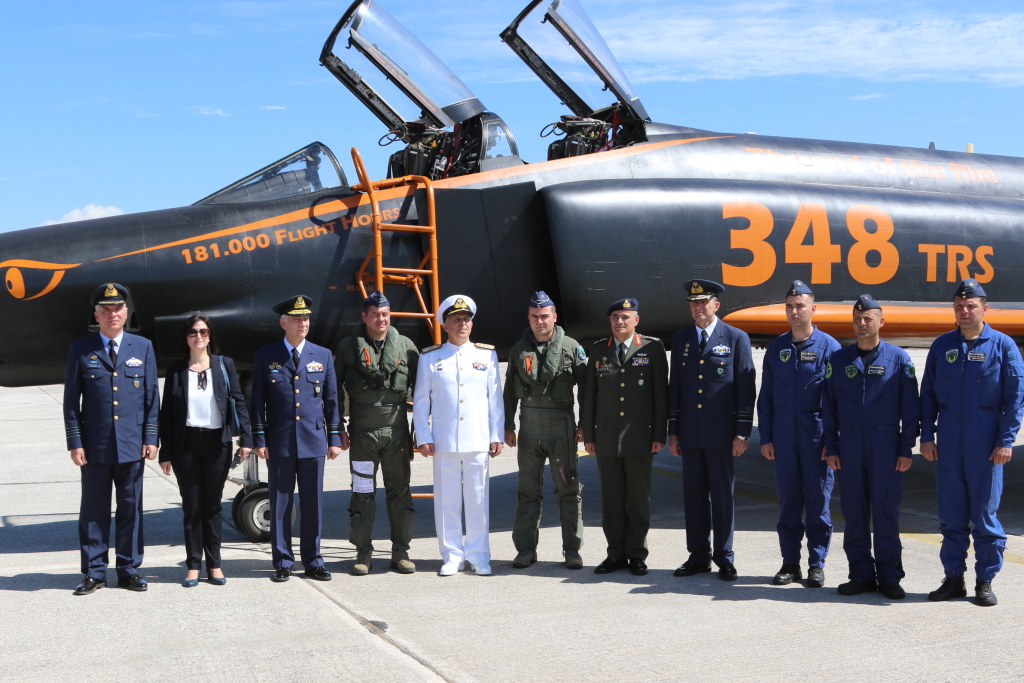
|
Amongst those present at the ceremony were the Chief of the Hellenic
Tactical Air Force, Lt. General Georgios Blioumis, the Commander of the
1st Army, Lt. General Dimokritos Terzakis, the Special Secretariat of
the Ministry of Defense, Kalliopi Papaleonida.
|
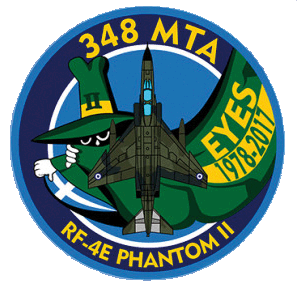
The role of the RF-4E Phantom II in the
Hellenic Air Force will now be succeeded by its fleet of F-16
Fighting Falcon Block 52+ fighters, which are equipped with the Goodrich DB-110 digital airborne tactical reconnaissance system, which can capture images day or night and transmit them to the ground in real time for immediate exploitation and analysis (unlike the RF-4E Phantom II's wet-film cameras).
In addition, the Thales ASTAC electronic intelligence pods that were carried by the RF-4E Phantom II's are now to be more frequently carried by the HAF's
Tanagra-based Mirage 2000 multirole fighters.
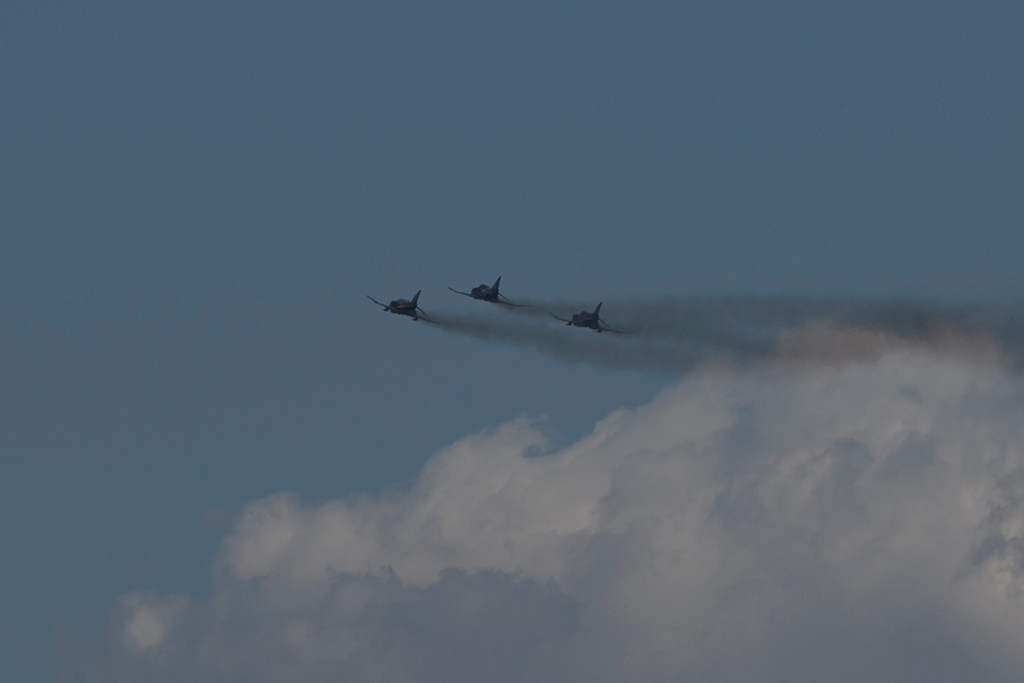
|
With the phase out of the last Greek RF-4E Phantom II,
Iran and Japan remain the last operators of the reconnaissance variant of the “Rhino”.
|
Karo-Aviation would like to thank the 348 MTA for our permission to attend
this moment in time. And to all the staff present at Larissa Air Base
for their warm welcome and hospitality. |